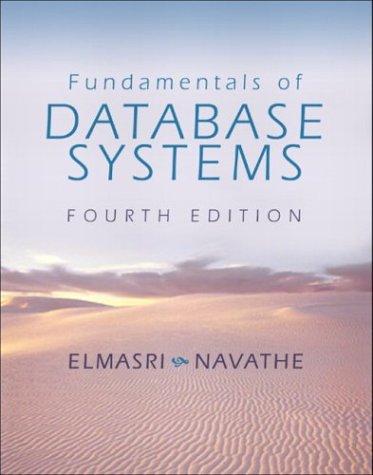Question
I need some help with this program. Thanks In this lab, you are required to develop c++ class that models Fraction object which has two
I need some help with this program. Thanks
In this lab, you are required to develop c++ class that models Fraction object which has two int data members named myNumerator and myDenominator.
Given this definition of a new type Fraction, we can make declarations like the following:
Fraction frac1, frac2, frac3;
These declarations define three Fraction objects with the following forms:
frac1
| myNumerator | |
| myDenominator |
frac2
| myNumerator | |
| myDenominator |
frac3
| myNumerator | |
| myDenominator |
Checking point 1: three constructors are required. Default constructor to set up a Fraction object as 0/1. Constructor with two ints as argument to set up the numerator and denominator. Copy constructor with another Fraction object as an argument to copy the argument fraction object.
So you can define Fraction f; Fraction f(2,3); Fraction f(f1); in your test program.
Checking point 2: getter and setter functions for myNumerator and myDenominator.
Checking point 3: define a toString function member for your Fraction class. so that when f is a Fraction whose numerator is 3 and whose denominator is 4, then a message:
cout<< f.toString();
will display
3/4
checking point 4:
Add an overloaded ==, and != operators to the class
Checking point 5:
Add an overloaded +, -,* to the class
Checking point 6: implement the simplify member function: if class Fraction had a simplify() operation so that fractions like: 2/6, 6/12, 12/4 could be simplified to 1/3, 1/2, and 3/1, respectively.
Such an operation is useful to keep fractional results as simple and easy to read as possible. To provide this capability, we will implement a Fraction function member named simplify(). In a function member like operator*, -, +which constructs its answer in a Fraction named result, we can simplify this answer by calling simplify() as follows:
result.simplify();
Find gcd, the greatest common divisor of myNumerator and myDenominator.
Replace myNumerator by myNumerator/gcd.
Replace myDenominator by myDenominator/gcd.
Checking point7: Add overloaded >> and << operators to the class. Make them friend functions.
Make sure to write a complete test program to cover exercising each function in the class to show its correct implementation. For example, you might include Fraction.h, Fraction.cpp and FractionTest.cpp three files in your folder.
Step by Step Solution
There are 3 Steps involved in it
Step: 1

Get Instant Access to Expert-Tailored Solutions
See step-by-step solutions with expert insights and AI powered tools for academic success
Step: 2

Step: 3

Ace Your Homework with AI
Get the answers you need in no time with our AI-driven, step-by-step assistance
Get Started


